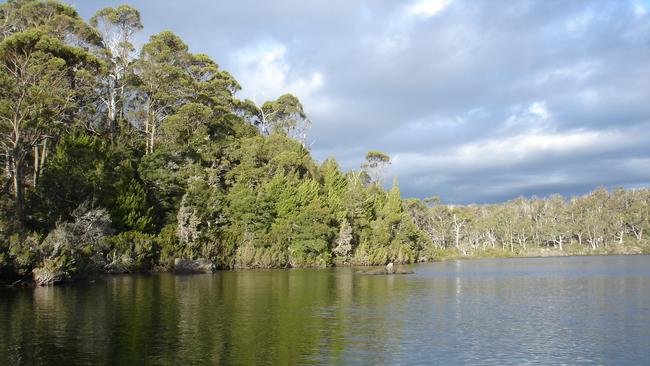Details guided Malbena call
SO now we know the detailed reasons why Federal Environment Minister Melissa Price’s office decided Tasmania’s current most controversial tourism development did not need to be separately approved under federal biodiversity conservation laws.

Opinion
Don't miss out on the headlines from Opinion. Followed categories will be added to My News.
SO now we know the detailed reasons why Federal Environment Minister Melissa Price’s office decided Tasmania’s current most controversial tourism development did not need to be separately approved under federal biodiversity conservation laws.
And forget the conspiracy theories. Documents disclosed via a Right to Information request by the Mercury reveal the officer delegated by the newly-minted minister to make the determination did so based on detailed advice from the federal department. And that advice concluded, on August 31, that the proposed ultra-luxury “standing camp” on Lake Malbena’s Halls Island in World Heritage-listed wilderness was “not likely to have a significant impact on matters of national environmental significance”.
MALBENA TOURISM PLAN ‘TICKED ALL THE BOXES’
That decision – made despite 900 submissions objecting to the proposal, and in defiance of advice from the National Parks and Wildlife Council – is now being challenged in the Federal Court by the Wilderness Society. The society plans to argue the Government did not properly apply the Environment Protection and Biodiversity and Conservation Act.
But the documents that were disclosed to the Mercury yesterday after a request lodged by reporter Emily Baker on September 5 reveal 11 pages of detailed explanation as to why the department determined the Lake Malbena plan did not meet the requirements for environmental approvals under that Act.
First, the “decision brief” finds the development would be “unlikely to have a significant impact” on the endangered wedge-tailed eagle – so long as all the rules the proponent had agreed to were obeyed. It next concludes that trampling impacts on endangered sphagnum bogs and associated fens should be “effectively mitigated” by a range of other rules agreed to by the proponent. And it goes on to say it is considered unlikely there would be any significant impact on other local wildlife, including the endangered Tasmanian devil, the vulnerable masked owl and spotted-tailed quoll and the listed migratory bird species that sometimes visit the island’s bogs.
The assessment then goes on to consider the development against the Tasmanian World Heritage Area’s three cultural and four natural criteria. On the cultural criteria, it notes “extensive consultation” already undertaken with local indigenous groups and that it is considered unlikely the project site would contain any cultural heritage (such as relics). On the natural criteria, it concludes the visual impacts of the four new buildings on the island would likely not impact on the “exceptional natural beauty and aesthetic importance” of the World Heritage Area. It also says there is likely to be little significant impact on Lake Malbena from greywater, sewage and rubbish at the site. And it notes that potential noise impacts from the helicopter flights in and out had been successfully “avoided or mitigated”.
(But on this last point the decision brief itself only refers to “a maximum of 30 trips per year” when on the 52nd of the 100-plus pages of attachments to the brief is found the detail that “the heli-use required to facilitate up to 30 guiding packages per year is in vicinity of 60-120 return heli-trips . . . equating to a total flight time of between 25 and 44 hours per year at capacity”.)
Regardless, the federal department clearly concludes the proposal “is unlikely to cause one or more of the World Heritage values to be lost, degraded or damaged or notably altered, modified, obscured or diminished” and “there is unlikely to be a significant impact to the values of a World Heritage property”.
There remain legitimate questions about the State Government’s apparent willingness to bend the rules to allow this project to go ahead. But these documents suggest the federal assessment was not made lightly.


